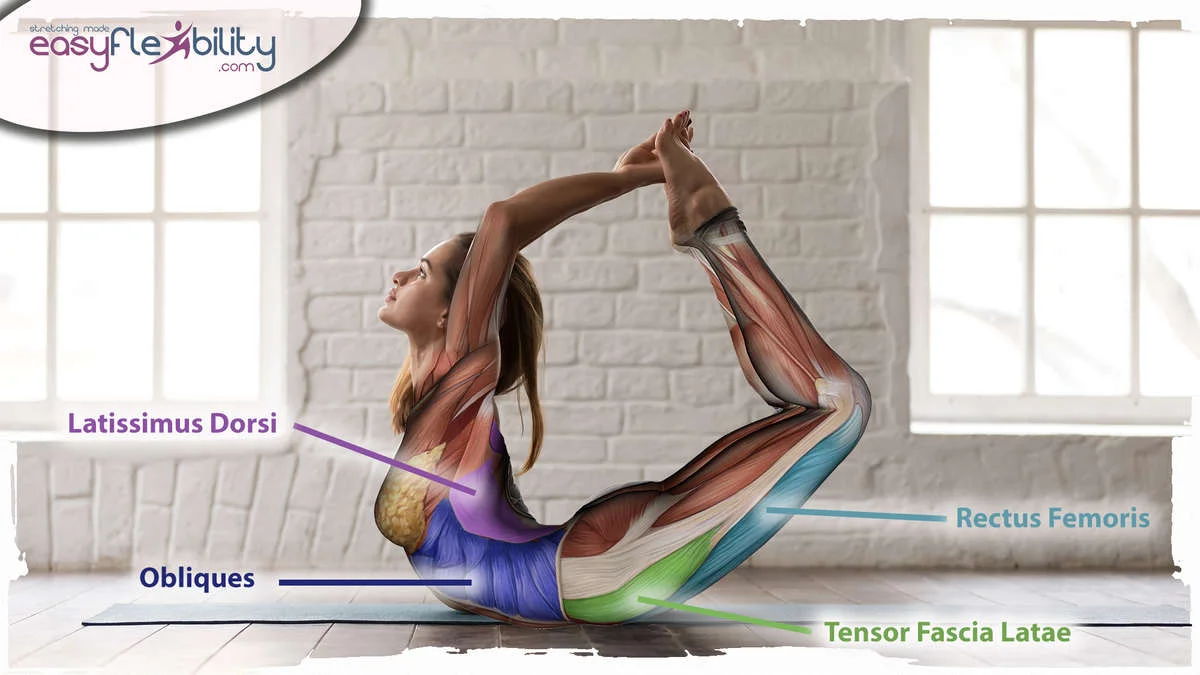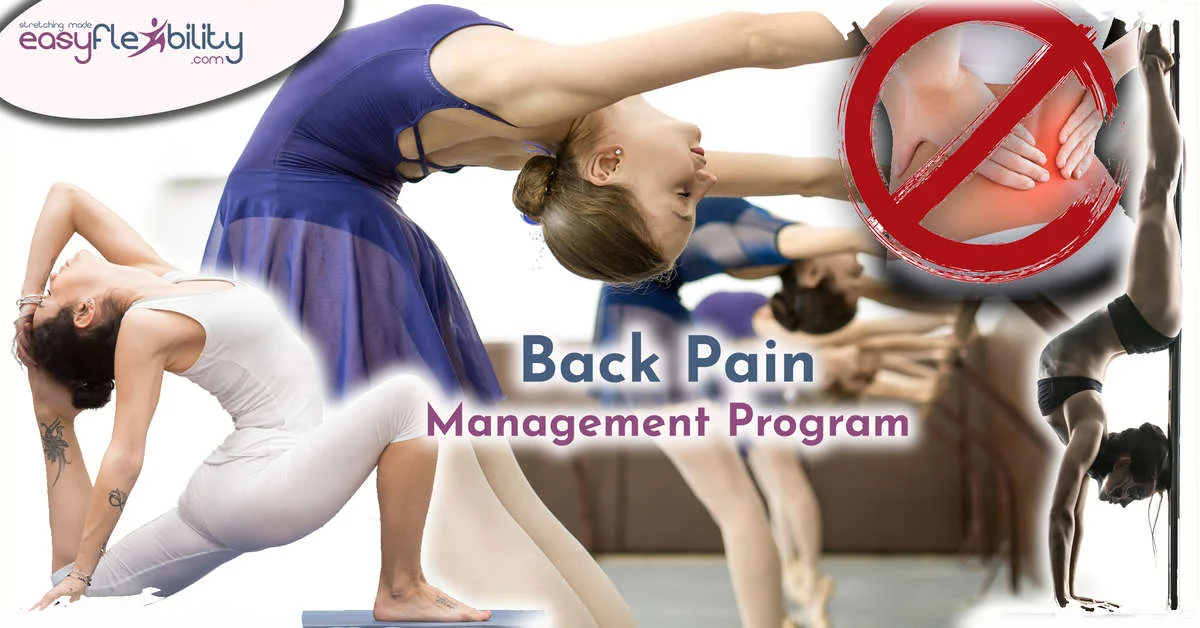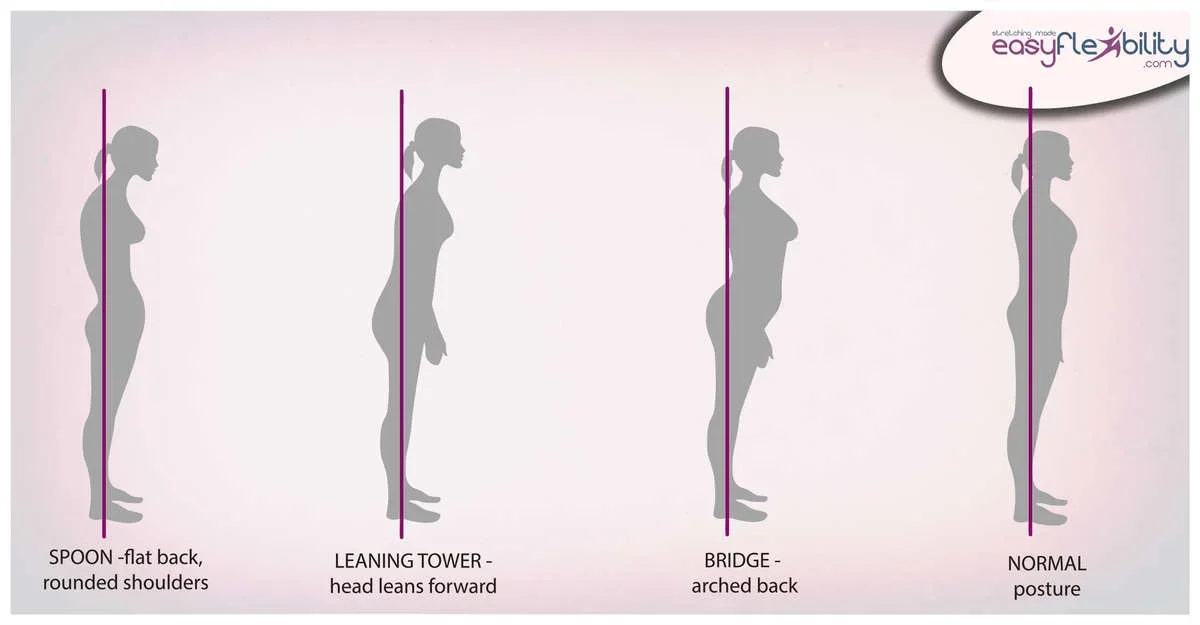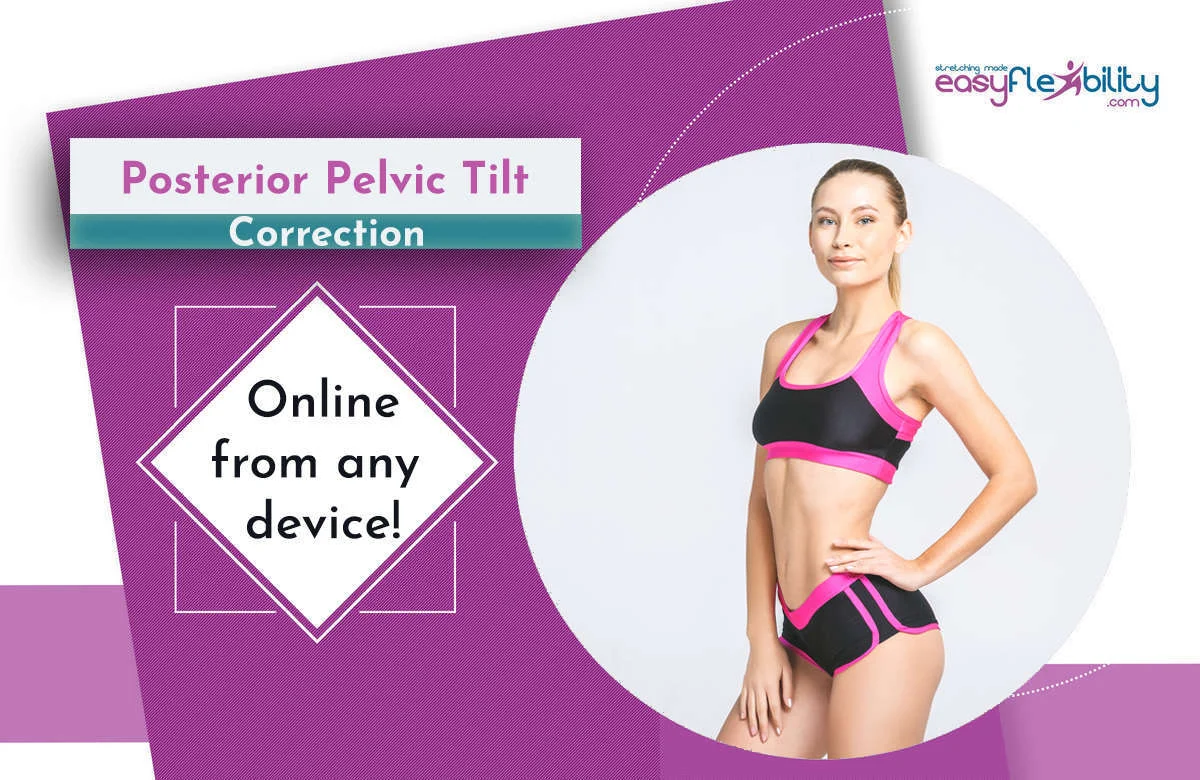Exploring the Differences: Back Stretching, Back Bending, and Training for Back Pain Relief
May 09, 2024

Unveiling the Variations: Distinguishing Between Back Stretching, Back Bending, and Techniques for Alleviating Back Pain and more!
We've noticed a lot of you have been reaching out, asking about back programs. The thing is, it's not always clear what kind of back program you're after, and that got us thinking—it's time we chat about this.
You know, when you mention you're on the hunt for a back program, it's a bit like saying you're craving something sweet. Are we talking chocolate, fruit, or a slice of pie? Similarly, are you in the market for a program that'll help you master those back bends, or are you more about stretching it out to ease that back tension? Maybe it's back pain that's got you seeking some relief.
And then there's the whole tilt situation. Some of you might be dealing with an anterior pelvic tilt, where your lower back arches a bit too much, or a posterior tilt, where it's a tad too flat. Oh, and let's not forget about those looking to give their upper back some love, all in the name of better posture.
Let's dive into this together and figure out exactly what kind of back program will hit the spot for you.
You know, when you mention you're on the hunt for a back program, it's a bit like saying you're craving something sweet. Are we talking chocolate, fruit, or a slice of pie? Similarly, are you in the market for a program that'll help you master those back bends, or are you more about stretching it out to ease that back tension? Maybe it's back pain that's got you seeking some relief.
And then there's the whole tilt situation. Some of you might be dealing with an anterior pelvic tilt, where your lower back arches a bit too much, or a posterior tilt, where it's a tad too flat. Oh, and let's not forget about those looking to give their upper back some love, all in the name of better posture.
Let's dive into this together and figure out exactly what kind of back program will hit the spot for you.
Whether you're just starting out in flexibility training or already have some knowledge about various training programs (not limited to EasyFlexibility's offerings), you might find valuable insights in this blog post.
If you're just starting with EasyFlexibility and aren't familiar with Paul Zaichik's method, allow us to give you a brief overview of what our system entails.
EasyFlexibility, created by the flexibility expert Paul Zaichik, brings over 30 years of experience to the table. His unique approach, known as Zaichik Stretching Techniques, has revolutionized flexibility training, impacting thousands of people worldwide. The core idea behind Paul Zaichik's method is to achieve flexibility quickly, safely, and without pain, making it suitable for people of all ages and fitness levels.
While we could spend a lot of time explaining the details of Zaichik Stretching Techniques, experiencing them firsthand is much more effective. These techniques are truly different from any stretching you've tried before.
Why not give it a try right now? Here's a quick technique focusing on the shoulder that you can do while standing. It only takes 6 seconds. Try it out and see how quickly your shoulder can become more flexible!
While we could spend a lot of time explaining the details of Zaichik Stretching Techniques, experiencing them firsthand is much more effective. These techniques are truly different from any stretching you've tried before.
Why not give it a try right now? Here's a quick technique focusing on the shoulder that you can do while standing. It only takes 6 seconds. Try it out and see how quickly your shoulder can become more flexible!
Understanding Back Bends: What Are They?
So, let's chat about back bending. Imagine it as a kind of graceful dance move where you're folding your body backwards. It's like saying hello to the sky with your back! You might have heard of or even tried the cobra position, where you're lying on your stomach and arching your back up, kind of like a snake ready to strike (but in a peaceful way, of course).
Or perhaps you've ventured into the bridge position, where you push up from your feet and shoulders, creating this beautiful arch, almost like a rainbow. But hey, that's just the tip of the iceberg.
Back bending can take so many forms, each with its own flair and benefits. It's not just about bending for the sake of bending; it's about exploring what your body can do, stretching your limits (literally), and finding that sweet spot where challenge meets comfort.
BACK BENDING COMBO - YOUR ULTIMATE BACK FLEXIBILITY GUIDE!
Unlocking supreme back flexibility isn't just for show; it's the secret sauce behind the enviable grace of those with 'cat-like' agility. Imagine bending, twisting, and stretching with the ease of a feline, captivating onlookers with your fluid movements. Sounds impressive, right?
But let's face it, the journey to limberness is often paved with groans over back aches and creaky joints. Fear not, for this odyssey doesn't have to be a Herculean ordeal.
Here's the scoop: mastering the art of the Back Extension isn't just for the elite athletes among us. Dancers, gymnasts, figure skaters, wrestlers, and even the weekend sports warriors—everyone stands to gain from a spine that bends like a willow.
Enter the game-changing Zaichik Stretching Techniques, your secret weapon to unlocking flexibility fast, minus the "ouch" factor. Ready to astound yourself with the flexibility feats you'll achieve? Plus, think of the health perks as the cherry on top of your newfound agility. Let the bending begin!
But let's face it, the journey to limberness is often paved with groans over back aches and creaky joints. Fear not, for this odyssey doesn't have to be a Herculean ordeal.
Here's the scoop: mastering the art of the Back Extension isn't just for the elite athletes among us. Dancers, gymnasts, figure skaters, wrestlers, and even the weekend sports warriors—everyone stands to gain from a spine that bends like a willow.
Enter the game-changing Zaichik Stretching Techniques, your secret weapon to unlocking flexibility fast, minus the "ouch" factor. Ready to astound yourself with the flexibility feats you'll achieve? Plus, think of the health perks as the cherry on top of your newfound agility. Let the bending begin!
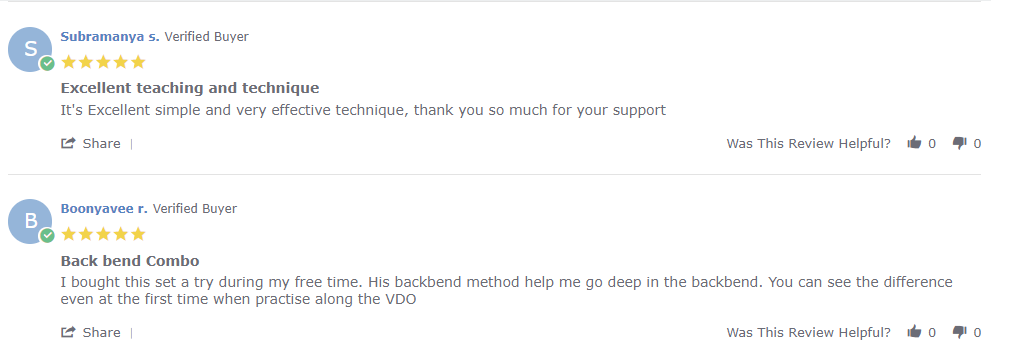
Understanding Back Stretching: What Does It Mean to Stretch Your Back?
So, when we talk about stretching your back, it's usually about leaning forward to give those back muscles a good stretch, especially the ones that help keep your spine straight. But there's also this thing where stretching means giving your spine a bit of a breather, kind of like letting it decompress.
You know, some experts like physical therapists or chiropractors have these cool gadgets that gently pull you apart – not in a scary way, but more like stretching you from your top and bottom ends. And have you ever tried hanging from a bar, letting your feet dangle? Or even hanging upside down with those funky boots? It's all about giving your spine that lovely stretch.
Now, let's chat about back pain for a sec. When you say you've got back pain, what's the real deal? Are you on the hunt for something to ease that pain, or is it something else you're after when you mention needing a "back pain program"?
If it's a program specifically for back pain you're looking for, we're diving into a whole different pool. This involves not just stretching but also strengthening those muscles around your lower back and hips. It's what most folks mean when they talk about needing help with lower back pain. But sometimes, it's not just about focusing on the core and hips; it might also mean looking at other areas of the body.
You know, some experts like physical therapists or chiropractors have these cool gadgets that gently pull you apart – not in a scary way, but more like stretching you from your top and bottom ends. And have you ever tried hanging from a bar, letting your feet dangle? Or even hanging upside down with those funky boots? It's all about giving your spine that lovely stretch.
Now, let's chat about back pain for a sec. When you say you've got back pain, what's the real deal? Are you on the hunt for something to ease that pain, or is it something else you're after when you mention needing a "back pain program"?
If it's a program specifically for back pain you're looking for, we're diving into a whole different pool. This involves not just stretching but also strengthening those muscles around your lower back and hips. It's what most folks mean when they talk about needing help with lower back pain. But sometimes, it's not just about focusing on the core and hips; it might also mean looking at other areas of the body.
Banish Back Pain in Just 15 Minutes a Day: At-Home Lower Back Focus Training with Paul Zaichik
Hey there! Guess what? You didn't just stumble here by accident. You're on a quest for something epic: a life without that nagging lower back pain. Imagine getting flexible and strong, without the grimace or groan, zipping through to pain-free nirvana swiftly!
Dive into this online treasure trove where Paul Zaichik will guide you through a workout that's all about boosting your lower back's happiness. We're talking about stretching and strengthening the muscle crew around your lumbar to bring balance and safe vibes to your spine.
Ready to kick back pain to the curb in less than 15 minutes a day?
This online course is your golden ticket to a series of smooth moves in a progressive program aimed at erasing back pain and warding off future sneak attacks!
Dive into this online treasure trove where Paul Zaichik will guide you through a workout that's all about boosting your lower back's happiness. We're talking about stretching and strengthening the muscle crew around your lumbar to bring balance and safe vibes to your spine.
Ready to kick back pain to the curb in less than 15 minutes a day?
This online course is your golden ticket to a series of smooth moves in a progressive program aimed at erasing back pain and warding off future sneak attacks!
Here's a sneak peek of what's in store:
- A muscle magic sequence for those aching backs and for anyone keen on keeping their back in tip-top shape for the long haul.
- A quick, 15-minute morning routine to supercharge your day.
- A longer, 25-minute routine to deeply stretch your lower back and its buddies.
- Muscle-building secrets to guard your lower back and master the lumbar arch.
- Zen breathing and mind tricks to boost your daily mojo and overall well-being.
Take the reins on your back's future and step into a life of ZERO pain. Discover how straightforward moves can revolutionize your lumbar health and comfort. Let's do this!
Or maybe, when you're talking about wanting a back stretching program, are you actually on the hunt for a Perfect Posture Program?
You know, when folks come around asking for a good posture program, they often say they're looking for a "back program." But, let's clear the air a bit – it's not all about doing those back bends or stretching till you touch your toes.
What they're really after is feeling comfy and sturdy, making sure their upper middle back isn't doing this awkward forward hunch, twist, or lean. It's like, without saying it outright, they're hinting at wanting a posture program.
They're looking for ways to stand tall and strong, without that nagging slouch or twist throwing them off balance. So, when they talk about wanting a back program, what they're really eyeing is a holistic approach to straighten up and fly right, posture-wise. It's all about getting that alignment in check and feeling great in their own skin.
Having a perfect posture is one of those things that everyone talks about, yet very few know how to get.
Often general terms like "Do more Yoga", or "Take Pilates Class" come to mind.
The problem?
Too many exercises and non are specific enough to improve the way a person bears his or her body.
We fix these issues!
The problem?
Too many exercises and non are specific enough to improve the way a person bears his or her body.
We fix these issues!
We fix this issue by focusing on all aspects of poor posture.
- Head thrown back
- Chin stuck forward
- Upper and middle back form a convex ball
- Arm rotated in
- Scapula's protracted, etc.
This program will help you get a Perfect Posture!
The combination of proprietary Zaichik Stretching and strengthening exercises reverses the effect of gravity and years of self neglect.
Each section of the body concentrated on and taken care off piece by piece.
It takes at most few weeks before a person begins to look better and most importantly to feel better.
Each section of the body concentrated on and taken care off piece by piece.
It takes at most few weeks before a person begins to look better and most importantly to feel better.
Or maybe what you are really looking for is a program that will help you with your Lordosis or Kyphosis and are asking for a back program instead?
Occasionally, when individuals come seeking a back program or some form of assistance for their back, what they're truly aiming for is a bit more specific. They're often looking to adjust the curvature in their lower back. It's a nuanced need, but an important one.
For some, the issue lies in having an excessive curve, known as Lordosis. They're on the lookout for ways to lessen this curve, to bring a sense of balance back to their posture.
On the flip side, there are those whose concern is the opposite; their back is too flat, and they're eager to introduce just a hint of curvature to their lower back.
Transform Your Posture: Say Goodbye to the 'No Butt Syndrome' and Hello to a Stronger, Curvier Lower Back!
Our program revitalizes your figure by restoring the natural curve of your lower back, reducing stress and danger during everyday activities like squatting and lifting. With Zaichik Stretching and unique posture strengthening, not only will your back thank you, but you'll also see your butt reappear, stronger and more defined than ever!"
Understanding the Essentials: Distinguishing Back Bending from Back Stretching
Back bending and back stretching might seem similar, but they serve different purposes. This article aims to shed light on their distinctions, as these terms are often used interchangeably. Let's dive into the specifics.
When you bend backward, you're primarily stretching the muscles in the front of your body and potentially strengthening the muscles in your back. The exact muscles targeted can vary based on your goals.
Within the EasyFlexibility system, the choice of supporting or strength exercises that complement flexibility training is tailored to the specific skill being worked on. This means that for one skill, you might focus on strengthening the muscles that oppose the movement (antagonist muscles), while for another, you might strengthen the muscles that assist the movement (agonist muscles).
Take back bending, for example. This movement stretches the front body muscles, but the specific muscles you strengthen will depend on the type of back bending you're doing.
Consider the high cobra pose, where the feet touch the head. This pose stretches the rectus abdominis, obliques, hip flexors, adductors, quadriceps, and, depending on the head's position, the neck flexors.
At EasyFlexibility, we go beyond simply holding a pose. We focus on isolating muscles based on their actions, which can significantly accelerate flexibility gains. This approach is something you might already be familiar with if you're reading this on the EasyFlexibility blog.
Incorporating the arms into your back bending, such as when performing a bridge, stretches additional muscles. This includes the rhomboids, teres major, and depending on arm positioning, the subscapularis, posterior deltoid, teres minor, latissimus dorsi, and even front-located muscles like the pectoralis minor and major. This comprehensive approach ensures a balanced development of flexibility and strength.
When you bend backward, you're primarily stretching the muscles in the front of your body and potentially strengthening the muscles in your back. The exact muscles targeted can vary based on your goals.
Within the EasyFlexibility system, the choice of supporting or strength exercises that complement flexibility training is tailored to the specific skill being worked on. This means that for one skill, you might focus on strengthening the muscles that oppose the movement (antagonist muscles), while for another, you might strengthen the muscles that assist the movement (agonist muscles).
Take back bending, for example. This movement stretches the front body muscles, but the specific muscles you strengthen will depend on the type of back bending you're doing.
Consider the high cobra pose, where the feet touch the head. This pose stretches the rectus abdominis, obliques, hip flexors, adductors, quadriceps, and, depending on the head's position, the neck flexors.
At EasyFlexibility, we go beyond simply holding a pose. We focus on isolating muscles based on their actions, which can significantly accelerate flexibility gains. This approach is something you might already be familiar with if you're reading this on the EasyFlexibility blog.
Incorporating the arms into your back bending, such as when performing a bridge, stretches additional muscles. This includes the rhomboids, teres major, and depending on arm positioning, the subscapularis, posterior deltoid, teres minor, latissimus dorsi, and even front-located muscles like the pectoralis minor and major. This comprehensive approach ensures a balanced development of flexibility and strength.
When aiming to stretch your back in the traditional sense, you're primarily focusing on the spinal extensors and possibly the quadratus lumborum, depending on your movements and whether your arms are involved.
Interestingly, the muscles stretched during a bridge are similar to those stretched when hanging from a bar. However, the involvement of arms can differentiate back bending from back stretching.
For instance, back stretching can be exemplified by lying on your back and performing a crunch. This action contracts the front muscles while stretching the back muscles, a process known as reciprocal inhibition. If you're using your arms to pull your head towards your knees, this action shifts towards a passive stretch for your back.
Tight back muscles are less common among athletes, who often focus on stretching forward rather than specifically targeting their back muscles. This is because athletic conditioning typically aims to enhance flexibility in the hamstrings, glutes, and other muscles that limit forward bending, rather than the back itself. This focus stems from the fact that most athletic conditioning exercises are designed with this goal in mind.
Poor posture and daily activities that involve back movement mean that most people don't struggle with spinal extensor flexibility. However, individuals in certain sports may seek exceptional flexibility in these muscles, such as grapplers.
The need for back bending varies; not everyone requires it for their sports or activities, though some may desire it for personal reasons. For the majority, the challenge lies in forward bending from the hips due to restrictions in those areas, rather than bending from the spine itself.
Interestingly, the muscles stretched during a bridge are similar to those stretched when hanging from a bar. However, the involvement of arms can differentiate back bending from back stretching.
For instance, back stretching can be exemplified by lying on your back and performing a crunch. This action contracts the front muscles while stretching the back muscles, a process known as reciprocal inhibition. If you're using your arms to pull your head towards your knees, this action shifts towards a passive stretch for your back.
Tight back muscles are less common among athletes, who often focus on stretching forward rather than specifically targeting their back muscles. This is because athletic conditioning typically aims to enhance flexibility in the hamstrings, glutes, and other muscles that limit forward bending, rather than the back itself. This focus stems from the fact that most athletic conditioning exercises are designed with this goal in mind.
Poor posture and daily activities that involve back movement mean that most people don't struggle with spinal extensor flexibility. However, individuals in certain sports may seek exceptional flexibility in these muscles, such as grapplers.
The need for back bending varies; not everyone requires it for their sports or activities, though some may desire it for personal reasons. For the majority, the challenge lies in forward bending from the hips due to restrictions in those areas, rather than bending from the spine itself.
I trust this article has provided you with a clear distinction between back bending and back stretching, aiding in your understanding of what you're truly seeking. Should you have any inquiries or need further clarification, please don't hesitate to contact us by clicking here. We're eager to help you discover the perfect program tailored to your specific needs.
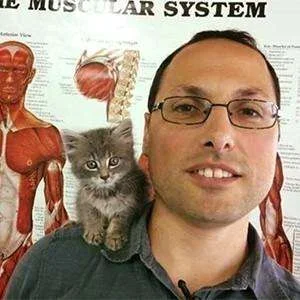
About the Author:
Paul Zaichik is an Exercise Science Expert, author of multitude of books, and the creator of Zaichik Stretching Technique (formely known as Kinesiological Stretching Technique). His speciality is flexibility training as well as body weight conditioning. His innovative method is designed to have maximum carry over into specific athletic techniques. Paul is the author of books and DVD’s on the topic of flexibility, martial arts and bodyweight training. Over the years, Paul Zaichik has worked with a variety of individuals including athletes, entertainers, and military personnel. His ElasticSteel Method of Athletic Conditioning programs, EasyFlexibility Programs and Zaichik Stretching Techniques are used world wide by both professional and amateurs with great success.

